
by Mark Smiley | Mar 24, 2017 | Travel

The INFLATABULL Rodeo Bull Ride On Float by Intex provides a “bull-riding” experience in the water and is around $50 at select retailers both in-store and online.
(BPT) – Visit any retailer’s pool aisle or website, and you’ll quickly realize a challenge your parents and grandparents never had to face – more pool inflatables to choose from than you could ever imagine. Whether you’re shopping for a larger-than-life float island or something to help keep your non-swimming little one safer in the pool, the sheer range of options can be overwhelming, but exciting!
“Shopping for pool inflatables is supposed to be fun, not overwhelming,” says Marvin Natareno, an inflatables expert with Intex Recreation Corp., the leading manufacturer of novelty pool inflatables. “Yet there are so many choices these days that comparison shopping for the best inflatable for your needs can be a challenge.”
Natareno offers some tips for choosing inflatables that will help keep your summer fun going swimmingly:
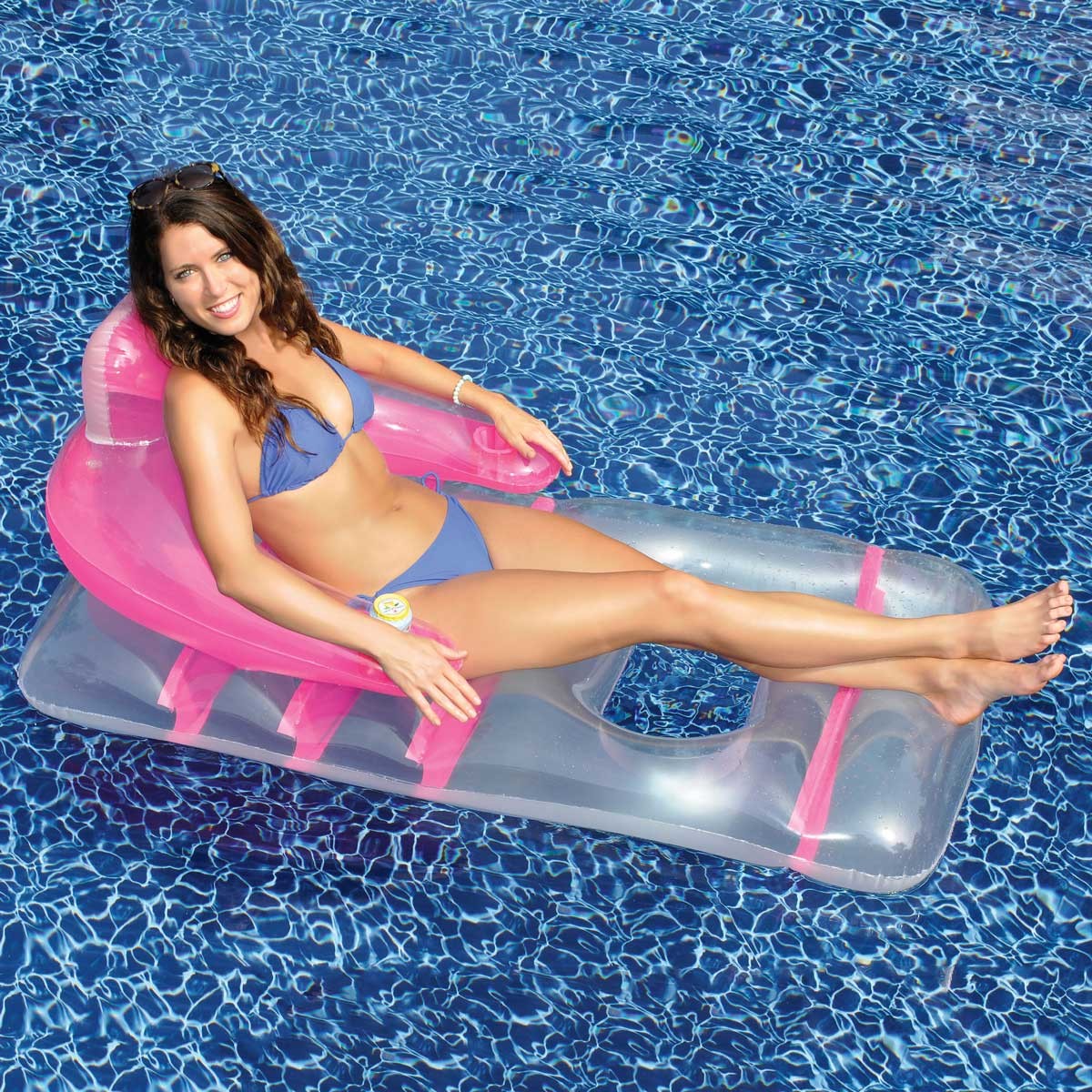 Grownup fun and relaxation
Grownup fun and relaxation
When shopping for an adult-sized novelty float, Natareno says, keep comfort, quality and originality in mind. Today’s floats can provide a unique, unexpected water experience. For example, Intex is the only manufacturer offering a rodeo bull-themed float. The INFLATABULL Rodeo Bull Ride On Float provides a “bull-riding” experience in the water and is around $50 at select retailers both in-store and online.
Quality counts
When investing in a large novelty float, quality certainly counts. The last thing you want is for it to fizzle flat during summer fun.
“If you’re investing in a large novelty float, you want to know it will last for many summers, not just one,” Natareno says. “Floats with quality PVC construction, well-sealed seams and colors that retain their vibrancy are ones to consider, especially for a more active group.”
Intex offers high-quality floats with everyone’s favorite themes, including the Mega Toucan and Mega Pegasus Island Floats, the Watermelon Island and Popsicle Float. All are available in-store or online through select retailers that can easily be found via a quick online search.
Cost doesn’t always equal quality
When shopping for a reasonably priced, quality inflatable, Natareno recommends looking at the construction and materials, and suggests looking for a brand name that you recognize and that has a long business history.
“Large-scale inflatables are very trendy right now thanks to social media and celebrity commentary,” Natareno says. “You don’t have to pay a premium price to get a quality inflatable that will provide hours of fun season after season.”
Inflatables for kids
Beach balls and classic rings might have been the first inflatable toys for kids, but today there are many more options, from inflatable arm bands meant to help stabilize little ones in the water to whale and plane-shaped ride ons. Manufacturers like Intex make a wide variety of inflatable toys for kids and offer some of the bestselling and most popular tubes and lounges that can be used from pools to rivers and lakes, like the River Rat and River Run tubes.
“Take a quick poll of your kids and see which style of float would be of interest for this pool season. Consider adding new ones each month as the season evolves for more creative fun,” adds Natareno.
Long live your inflatables
Inspect inflatables every time you use them, looking for any tears or sign of wear that can be repaired before they jeopardize the structural integrity of the toy or float. Although chlorinated pool water does a good job of keeping inflatables clean, using them at the beach or lake could mean some dirt. If inflatables become dirty, clean them with a soft brush and liquid soap and water.
Safety First

Large-scale inflatables like the Intex Mega Toucan Island are very trendy right now thanks to social media and celebrity commentary.
Most importantly, follow strict safety practices around pools. When it comes to floats, practicing good safety habits, setting and following rules, carefully reading instruction manuals and vigilant supervision can greatly reduce the likelihood of injury as well as reduce injury severity. Take time to review all safety information to assist in keeping you and your family safe this summer: www.intexcorp.com/safety-information-pools.
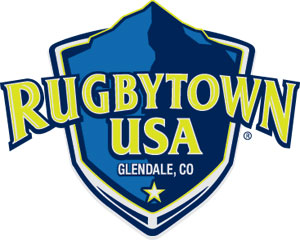
by Mark Smiley | Mar 1, 2017 | Glendale City News
by Kurt Woock
Writer for and on behalf of the City of Glendale
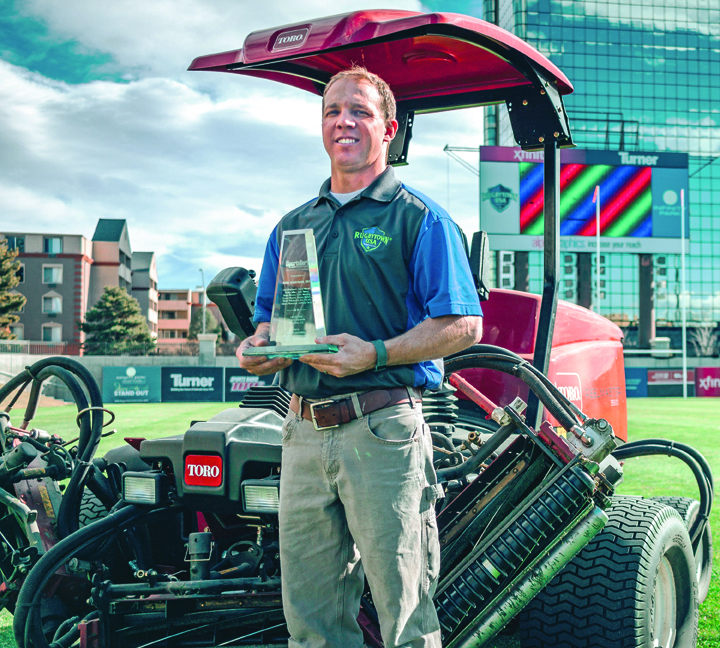 Imagine working all week to make something, only to have someone tear it apart. Now, imagine that happening over and over. That might sound like a punishment suffered by a poor sap from Greek mythology, but Noel Harryman calls it his job. And he likes it. Harryman is the manager for turf operations and Infinity Park. He leads a team from Glendale Public Works who ensure that the more than 10,000 square meters of Kentucky bluegrass at Infinity Park are green, neat, trimmed, and ready to take a beating.
Imagine working all week to make something, only to have someone tear it apart. Now, imagine that happening over and over. That might sound like a punishment suffered by a poor sap from Greek mythology, but Noel Harryman calls it his job. And he likes it. Harryman is the manager for turf operations and Infinity Park. He leads a team from Glendale Public Works who ensure that the more than 10,000 square meters of Kentucky bluegrass at Infinity Park are green, neat, trimmed, and ready to take a beating.
Infinity Park’s rugby pitch is designed to be flexible. It can host private events, it becomes movie theater seating in the summers. But Harryman said his job has one clear central purpose, “My job is to make sure it’s ready for play.” To do that, Harryman combines chemistry, hydrology, botany, and a big dose of sweat equity. And he does it well; Infinity Park won the 2016 Sports Turf Managers Association award for best sporting grounds in the country.
Anyone familiar with the Sisyphean task that is caring f or a lawn knows that the straightforward tasks involved — fertilizing, watering, cutting, weeding — bely a much more complex operation. Having a lush, green lawn is a fixed goal, but the obstacles that stand in the way are, like a game of whack-a-mole, ever changing. Weeds one year, bugs the next. A few months of drought followed by a week of heavy rain. Every year is different. Unlike a homeowner’s yard, however, Harry-man’s proficiency is judged by thousands every week.
or a lawn knows that the straightforward tasks involved — fertilizing, watering, cutting, weeding — bely a much more complex operation. Having a lush, green lawn is a fixed goal, but the obstacles that stand in the way are, like a game of whack-a-mole, ever changing. Weeds one year, bugs the next. A few months of drought followed by a week of heavy rain. Every year is different. Unlike a homeowner’s yard, however, Harry-man’s proficiency is judged by thousands every week.
During the season, Harryman is on the field daily. A week before a game, Harryman and a few others walk every inch of the field. They bring with them a mixture of pre-germinated grass seed, fertilizer, and sand. They look for patches that are wearing thin and apply the pasty mix. The mixture takes hold quickly and will yield grass in a matter of a few weeks. Monday, they give the entire field a full mow and another check for spots that need attention. Depending on the time of year, Monday’s mow might be followed by an application of fertilizer. Tuesday is a practice day, so field maintenance is low, but Harryman must check the field after for any damage done during practice. Wednesday brings another mow.
Thursday the field is prepped for painting. Friday is another mow followed by painting the field, a task that takes three people a full day. Saturday (game day) begins with another spot check for anything abnormal. On a good day, this might be a quick task. But a surprise snowstorm might necessitate an all-hands-on-deck snow removal (something that happened multiple times last year). After the game, the crew fills divots, and mixes a new batch of pre-germinated grass seed, and the cycle begins anew.
A few differences between home lawn care and rugby lawn care emerge. First, there’s a lot of mowing. Three mowings a week keep the lawn uniform. Harryman said that a standard home lawn has a height of 2.5 to 3 inches while Infinity Park’s field is a trim 1.25 inches. The shorter height provides a better playing surface for players and can increase the density of the grass over time.
Harryman also waters the turf using a method more precise than a sprinkler on an automatic timer. He calculates the field’s precise water needs based on temperature, soil measurements, and other variables. He aims to have the soil about 80-percent saturated with water, enough to ensure the plant receives the water it needs while leaving enough absorption potential in the event of rain (or snow). “One of the worst things you can do is play on a wet field,” he said.
Another benefit to not fully saturating the field is to encourage individual grass roots to drive down deeper, which makes the entire field stronger and more resilient. Harryman said that calculating the grass’s needs before watering results in less water usage relative to most home lawns.
Harryman also conducts semi-annual long-term maintenance. Three to four times per year, he takes soil samples to determine levels of various nutrients. After each test, he concocts a custom fertilizer that will bring the soil up to optimal nutrient levels. In one year, the field receives about 40 fertilizer applications, which switch between liquid and pellet. Each spring and fall, the entire field is “bulk seeded,” as opposed to the spot-fills that take place during the season, which ensures a thick turf.
The grass on a sporting field is often overlooked unless it’s in bad shape. But, like the underwater portion of an iceberg, it is crucial to supporting something that everyone can see and appreciate — the game itself. Even if the lawn doesn’t receive cheers from the crowd, the team that works on the grass knows that they’ve played an integral part in making the Infinity Park experience possible.
Joshua Bertrand, the director of public works for Glendale, said that the field represents something symbolic in addition to performing its functional role. “If fans rush the court at a college game, the NCAA fines them,” he said. “In high school, schools can get in trouble for the same thing.” YouTube is filled with videos of NFL security crews tackling fans who step foot onto the grass. “But at Infinity Park, fans and family are all invited onto the field. This happens after every game. It’s an accessible resource. It’s a unique part about Infinity Park. Most stadiums don’t have that.”
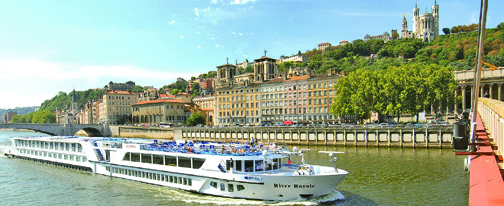
by Mark Smiley | Mar 1, 2017 | General Featured
Over 4,000 People Attend Travel Event
by Charles C. Bonniwell
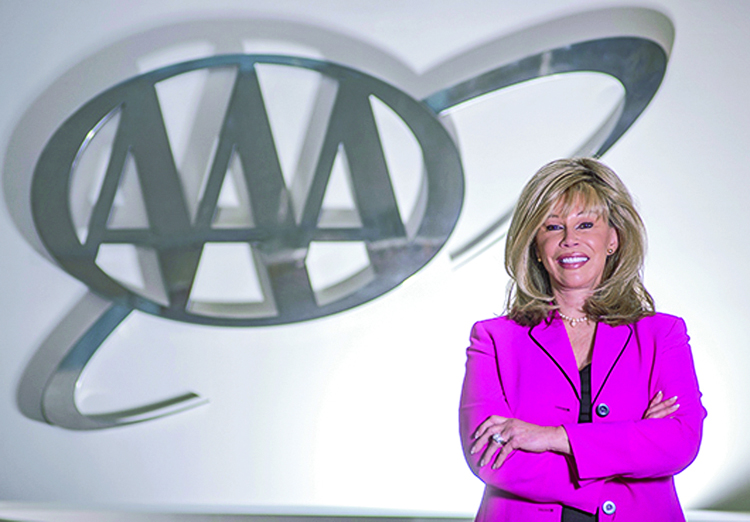
Most Coloradans associate AAA with roadside assistance services which is understandable since the company was founded in Chicago, on March 4, 1902, as the American Automotive Association. But in Colorado and across the country people are increasingly becoming aware that AAA is also the largest travel agency in the world. At a time when small independent travel agencies have been driven out of business as a result of the Internet, AAA has found a unique niche helping vacationers and travelers all over the world.
“We create a travel experience,” noted Joe Maloney, Vice President of Travel Operations for AAA of Colorado. “Anyone can go online to book a flight or get a hotel room, but what we can do is make sure you have a tremendous time from start to finish. We know everything from the best restaurants with the best prices to the top night clubs and entertainment virtually anywhere in the world. If a person wants the best price and most fun on a cruise, we can make sure that happens.”
Maloney also noted, “We support our members throughout any trip they may take. What happens if you miss a connection or a flight is canceled? Our agents are available 24/7 to assist you no matter what the emergency may be.”
Apparently the word is getting out because over 4,000 people showed up at the United Club inside Sports Authority Field at Mile High for AAA’s 2017 version of Vacations Showcase on a sunny Saturday afternoon February 4, 2017. Individuals and families were able to discover some of the worldwide travel options available to them through AAA as well as special show deals and expert travel planning advice.
There were over 60 exhibitors at the event who, at times, themselves appeared almost overwhelmed by the large, enthusiastic crowds that came to the 2017 show. Joseph Eastep from Oceania Cruises declared, “This has been a fantastic show. Absolutely tremendous turnout. We ran out of every brochure we had.”
Attendee Elayne Raksnys was ecstatic about the event, “Amazing, amazing show. Oh my goodness. Non-stop people for over five hours.”
Nicole Hunt, who attends scores of travel shows all over the country for Uniworld, a firm that specializes in boutique river cruises, exclaimed that AAA Colorado’s event was “the best travel show I have been to all year — bar none.”
Kim Essan who represents the Caribbean islands of Antigua and Barbados noted that the Colorado event even out performed the New York Times travel show she had just attended and that the Colorado event, “made my day.”
Emphasizing the importance of the travel aspect of AAA of Colorado was the fact that the company’s CEO and President Linda Cavanagh mixed and mingled with the crowds the entire six hours of the event. “People who want to travel and create their own dream vacations are wonderful individuals to be around. They are full of such incredible enthusiasm and energy. The show began and was over in what seemed like a just short moment in time,” said Cavanagh.
AAA, of course, continues to offer membership in its automotive club that made the company a household name. Membership includes not only roadside assistance but also warranty programs, car battery service, approved auto repairs as well as discounts on NAPA auto parts and accessories. The company can also offer life insurance, long-term care insurance, travel and trip insurance and various other services.
Those interested in becoming members of AAA of Colorado can go to its website colorado.aaa.com or call 303-753-8800.

by Mark Smiley | Mar 1, 2017 | Travel
by Mark Smiley

Eleanore Smiley on the patio of a preferred club guest room overlooking the ocean

An aerial view of Now Sapphire resort in Puerto Morelos, Mexico
My wife and I decided that we needed a family vacation and began to plan a trip to Mexico to have some fun in the sun and relaxation. When researching the different options of where to stay, there are a myriad choices. We decided to focus on resorts in Cancun that were family-friendly. The three websites we relied on most were Trip Advisor, Oyster, and Family Vacation Critic. These sites gave us a good idea, after sifting through hundreds of reviews, which resorts would suit our needs.
After careful consideration, we decided on Now Sapphire, a resort in Puerto Morelos, which is 15 minutes from the Cancun airport. Now Sapphire is part of AMResorts which also owns Dreams and Secrets resorts. Puerto Morelos is home to the second largest barrier reef in the world.
After booking roundtrip airfare on Southwest Airlines, we checked these two purchases and we quickly realized we should carefully select airport transfers, excursions, and anything else we wanted to do or the vacation could quickly escalate in price. Cancun Adventure Tours was the company we used for round trip airport transfers and an excursion to Xel-Ha Aquatic Park.
Upon arrival at the Now Sapphire resort, the staff was friendly and accommodating. We decided to pay the extra fee for Preferred Club and were not disappointed. This Club includes a private check-in and check-out ex

The Now Sapphire pool at sunrise
perience, free WiFi throughout the resort, an oceanfront room, the ability to reserve private bali beds near the pool, and more.
Now Sapphire, a former Paradisus hotel, was completely remodeled in 2010. The grounds are well maintained and the food in the seven restaurants was surprisingly good for an all-inclusive resort. The all-inclusive experience included all food, drinks, pool and beach wait service, 24-hour room service, and more.
The white sandy beach is private but does collect quite a bit of seaweed. The staff works by hand to try to clean it up each day but it does accumulate rapidly. Many reviews online mention this but we found it to be a beautiful beach with warm salt water and a tiki bar steps away to quench our thirst.

The oceanfront of now Sapphire Resort
Now Sapphire is also famed for hosting weddings. Beth Russell from Milwaukee, Wisconsin, was a guest at the resort for her son’s wedding. “The wedding was wonderful, the staff sure cares about the way things are put together, for a wedding,” said Russell. “Everything was spot on and we all had a good time.”
Excursions in Cancun are plentiful. Families must choose what fits their needs and decide how much of

Eleanore Smiley swimming with the dolphins through a company called Dolphin Discovery
their vacation they want to fill with excursions. We chose a dolphin experience with a company called Dolphin Discovery. Dolphin Discovery has multiple locations throughout Mexico. We chose to go to Dreams Puerto Aventuras which was approximately a one-hour ride from the resort. The 45-minute dolphin swim was an educational and a fun experience. The company added a manatee and sea lion experience at no additional cost. The guide and trainer were knowledgeable and friendly and the excursion included a lunch buffet.
There are resorts closer to the attractions so if you plan to do more than one or two, consider these venues as three hours in a van each day will eat into your vacation time.

The Smiley Family at Xel-Ha, a natural aquatic park
For our purposes, we did not want to fill each day with activities. We enjoyed swimming in the large pool complete with a swim up bar, relaxing on a bali bed, eating hamburgers and hot dogs at the Barefoot Grill by the pool, taking in a hydrotherapy treatment which is included with a Preferred Club upgrade.

The Hibachi meal at Lemongrass is very popular
Restaurants do not require reservations with the exception of Lemongrass Asian Cuisine’s hibachi meal. Most restaurants open for dinner at 6 p.m. but 24-hour room service is available. In addition, the Coco Café is open 24 hours featuring snacks and specialty coffees. This was especially helpful since tours departed from the resort at 7 a.m. which only allowed time for a coffee and muffin to go.
The combination of Southwest Airlines, Cancun Adventures, Dolphin Discovery, and Now Sapphire in Puerto Morelos provided an affordable and family friendly vacation. If considering this trip, temperat

The private white sandy beach at Now Sapphire
ures in Cancun tend to be best in the winter and spring. Summer temperatures soar into the 90s by August. Temperatures for this reporter’s trip remained in the mid-80s with very little rainfall.

by Mark Smiley | Mar 1, 2017 | Editorials
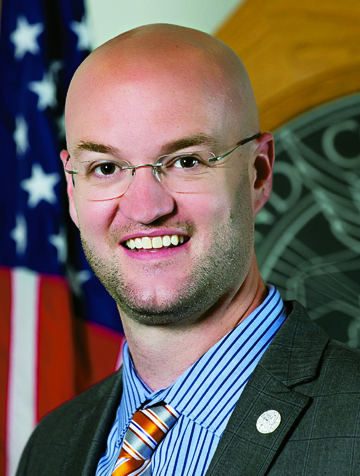 Old Abe Lincoln had sage advice for people like Denver City Council President Albus Brooks to wit:
Old Abe Lincoln had sage advice for people like Denver City Council President Albus Brooks to wit:
“You can fool all people some of the time, and some of the people all the time, but you cannot fool all the people all the time.”
Brooks has aspirations to succeed the developer controlled Michael Hancock as mayor of Denver and he knows the best way to do so is to do the bidding of those exact same developers.
Of course, it is not smart to let your constituents know that you are bought and paid for so Brooks is always coming up with highly inventive ways of pretending to be a man of the people. Case in point is his incredibly duplicitous work on “Small Lot Parking Exemption” scam that former print company owner and now real estate developer Barry Hirschfield and others are unleashing on Denver’s neighborhoods. We highlighted this controversy in our lead story last October titled “Humboldt Neighbors And Allies Take On Barry Hirschfeld.”
Back in 2010 the Denver Zoning Code was revised to exempt lots of 6,250 square feet or less from parking requirements when redeveloped. As stated by Councilman Jolon Clark the exemption “was to catalyze business on small retail and commercial parcels along major arterials such as Colfax Avenue and Broadway, where there were empty store fronts and there was a real threat of a loss of neighborhood character by small lots being assembled.”
But the ever greedy Denver real estate developer community saw the exemption as another opportunity to stick it to the local neighborhoods. The exemption does not expressly limit itself to small retail and commercial uses and does not expressly prohibit assemblages for application of the exemption, but it would appear clear that such was the intent. Thus people like Hirschfeld came up with an idea of building coffin-like micro units on assembled lots and rent them to the ever ripped off millennials pouring into Denver, but with absolutely no parking provided. Of course, the majority of the millennials do in fact have at least modest cars. Thus in areas that these units are built, everyone in the neighborhood will find it difficult if not impossible to find any street parking at times.
The problem was that the developers’ incredibly strained interpretation of the exemption might not stand up in court even in Denver’s sad sack judicial system. The developers and their bought and paid for Denver Cit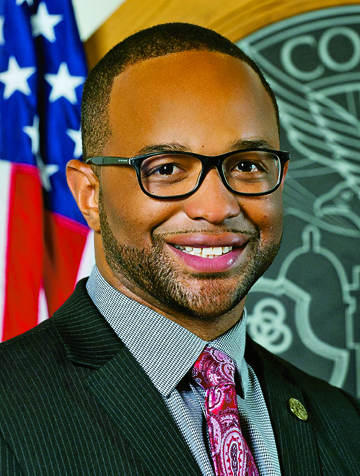 y Councilmembers needed time to amend the Zoning Code to remedy the problem, but they didn’t want to slow down any existing projects. And of course the citizens in various neighborhoods such as Cherry Creek North, Curtis Park and Humboldt Street were also screaming bloody murder about was being done to them.
y Councilmembers needed time to amend the Zoning Code to remedy the problem, but they didn’t want to slow down any existing projects. And of course the citizens in various neighborhoods such as Cherry Creek North, Curtis Park and Humboldt Street were also screaming bloody murder about was being done to them.
That is when the evil genius of Albus Brooks took hold. He told the citizens that he would demand that the Council impose a moratorium on all such projects until a Steering Committee could be formed charged with coming up with a consensus solution. All interested parties would have a seat at the negotiating table. The citizens were thrilled when the City Council passed the moratorium unanimously.
They did notice that all actually existing plans including all of Hirschfeld’s projects were exempted. Also when a Denver city councilman says he wants to bring everyone to the table what he really means is that he will form a committee that is stacked in favor of the developers and their allies and citizens will be in a distinct minority. As a result, citizen representatives agree either to be browbeaten into submission or they will be simply outvoted by the developers and their allies. This is, of course, exactly what happened with Brooks’ Steering Committee which was chaired by the distinguished City Council President himself as an “honest broker” between the two sides.
The citizens quickly discovered that Mr. Brooks was being led around on a relatively short lease by Mr. Hirschfeld who was of course prominently placed on the committee. Brooks after listening to all sides proposed an amendment to the Zoning Code which specifically made clear that the Small Lot Parking Exemption did in fact apply to micro apartment units and as well as to assemblages like Hirschfeld’s. If approved by the City Council, the amendment would solve the developers’ greatest danger of a legal challenge to the City’s interpretation of the existing exemption. The amendment also allowed the full exemption for small lots for the first two floors of an apartment building and three floors within walking distance of rail stations and frequent transit corridors (whatever that phrase means). Even more importantly the City Council could waive any and all restrictions at any time for their favorite developers without specific notice to the affected neighborhoods. It was a compromise in which the Hirschfeld side gave up nothing and the neighborhoods gave up everything as was intended by Councilman Brooks from the very beginning.
But “surprise, surprise, surprise” as Gomer Pyle would exclaim, the neighborhoods were not taken in. Abe Lincoln’s admonition cited above in fact came true. In the Steering Committee all four neighborhood representatives voted “no” along with one real estate business representative. Of course, the developers and their allies had locked in eight votes so the “consensus compromise” passed eight to five. The neighborhoods groups had now caught on to the stacked voting trick and they also demanded parity in the voting rights between developers and the neighborhoods in all future deliberations, if any, of the Steering Committee.
Brooks tried another fast one by having representatives of the Orwellian named “Denver Community Planning and Development Department” try to con the Inter Neighborhood Cooperative (the umbrella group of neighborhood associations and others in Denver) into voting in favor of the “consensus compromise” but even they were shot down by a unanimous 32 to 0 vote.
With his con job falling apart along with his reputation, Brooks was even struggling at the City Council level with the honest city councilmembers led by Jolon Clark raising questions. Brooks had to postpone City Council approval of the scam and request an extension of the building moratorium.
Next time the neighborhood groups meet with Council President Brooks on matters such as parity in voting on the Steering Committee they quietly, but visibly, should have with them a pulled Recall Petition pertaining to Mr. Brooks. It will help to clarify the issues and the stakes for everyone involved.
— Editorial Board

by Mark Smiley | Jan 30, 2017 | Glendale City News
by John Arthur
Writer for and on behalf of the City of Glendale
Since the club’s founding more than a decade ago, the Glendale Raptors have been a pillar of community involvement, most notably through their extensive involvement with Glendale youth. Raptors team members and coaches spend time volunteering at Children’s Hospital every year, offer free and low-cost youth rugby clinics and programs, as well as a Rugby Academy where local youth can build rugby skills from kindergarten all the way to the professional level. The Raptors’ commitment to involvement with Glendale is an especially important aspect of the club’s overall mission, and not simply because it engages young people with positive mentors and promotes fun and fitness. Youth rugby programs have the added benefit of increasing awareness for the fastest growing sport in the United States, creating a new generation of players, coaches, and fans.
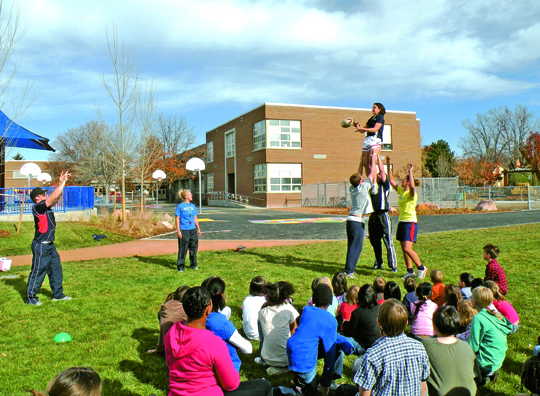 One of the most successful youth programs in 2016 was Rugby in the Schools, an offering spearheaded by Raptors Youth Programs Coordinator Jenna Anderson. Rugby in the Schools introduces the game through Rookie Rugby, a non-contact, educational format, specifically designed for presentations and instruction in school PE classes. Playing games and running drills, Anderson, alongside Raptors players and staff, introduces local schools to rugby’s inclusive nature, ensuring every child participates for the entire program period. Because rugby is often unfamiliar to local youth, everyone starts on an even playing field; as Anderson puts it: “We go in and it’s a clean slate. Everyone participates. Everyone is interested and every single child plays. Learning something new, as a group, is really important and really special.” Students experience the fun and excitement of rugby, as well as the importance of inclusion and good sportsmanship.
One of the most successful youth programs in 2016 was Rugby in the Schools, an offering spearheaded by Raptors Youth Programs Coordinator Jenna Anderson. Rugby in the Schools introduces the game through Rookie Rugby, a non-contact, educational format, specifically designed for presentations and instruction in school PE classes. Playing games and running drills, Anderson, alongside Raptors players and staff, introduces local schools to rugby’s inclusive nature, ensuring every child participates for the entire program period. Because rugby is often unfamiliar to local youth, everyone starts on an even playing field; as Anderson puts it: “We go in and it’s a clean slate. Everyone participates. Everyone is interested and every single child plays. Learning something new, as a group, is really important and really special.” Students experience the fun and excitement of rugby, as well as the importance of inclusion and good sportsmanship.
Anderson has led youth programming for the nine years since being brought into the Raptors club in 2008, but notes that 2016 was an especially busy year. The Raptors worked with 16 different local schools, and also held eight separate sessions elsewhere, including clinics at Glendale’s Infinity Park and for local nonprofits, as well as field days at local summer camps. According to Anderson, “2016 has really taken off. Teachers have shown a lot of interest in having rugby as part of their curriculum.” In addition to the host of benefits Rookie Rugby offers participating schools and students, the programming is and always has been entirely free of charge.
Rugby in the Schools is focused on communities surrounding Glendale, although dem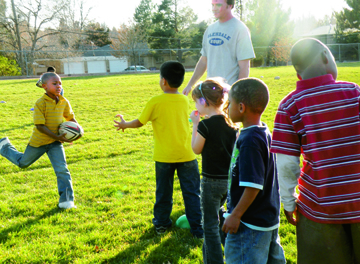 and exists all along the Front Range. In 2016, Anderson and the Raptors were a presence across metropolitan Denver, in both public and private institutions, though she admits the popularity of Rugby in the Schools has forced her to turn down requests from institutions located outside of the metro area. Working in physical education classrooms from kindergarten through 8th grade, she and players from the Raptors Men’s, Women’s, and Under-20 teams interacted with as many as 500 students per school. Engaging every interested student at each school, Anderson and her assistant volunteers spent between one and four days per location completing programming.
and exists all along the Front Range. In 2016, Anderson and the Raptors were a presence across metropolitan Denver, in both public and private institutions, though she admits the popularity of Rugby in the Schools has forced her to turn down requests from institutions located outside of the metro area. Working in physical education classrooms from kindergarten through 8th grade, she and players from the Raptors Men’s, Women’s, and Under-20 teams interacted with as many as 500 students per school. Engaging every interested student at each school, Anderson and her assistant volunteers spent between one and four days per location completing programming.
It’s difficult to point to any one reason why Raptors youth rugby programs blossomed in 2016. Clearly there are significant benefits for both the young participants and the schools they attend, but there is also something more. Rugby’s meteoric rise in popularity stateside in the last several years has been incredible, with Glendale at the epicenter of the sport in the United States. The reemergence of rugby in the 2016 Olympic games, combined with the Raptors’ successes on and off the pitch, have played a role as well. What is clear is that rugby is, in Glendale and the rest of the country, a sport that’s here to stay — and one that players and fans of all ages take great pride in.
Asked about her favorite part of Rugby in the Schools, Anderson says, “I love going and seeing kids who already play for the Raptors. They know we’re coming and they wear their Raptors shirts and it’s obvious that they’re really proud to be rugby players. It’s wonderful to see kids passionate about the sport.” The growth of rugby’s popularity in the United States shows no signs of slowing, and the work that Anderson and the Raptors are doing in community classrooms demonstrates that the next generation of players and fans is here to stay as well.






















